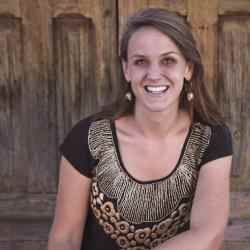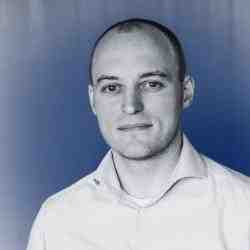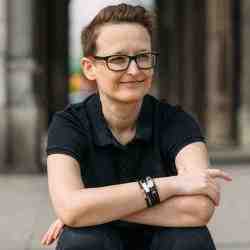Introduction
Andrew aims to transforming global eye care delivery systems by leveraging existing resourcing, building local capacities, and developing tools to increase efficiencies in screening, diagnosis, and ultimately treatment.
The New Idea
Andrew Bastawrous is reducing preventable blindness and untreated vision impairment by increasing the capacity and efficiency of public health eye care systems. By developing and integrating technological tools that can be used by non-medical professionals to screen, diagnose, and connect patients to treatment at scale, Andrew improves and accelerates diagnosis and treatment in developing countries where public systems chronically underdeliver.
Andrew has developed a two-pronged approach: first, aligning the systemic incentives to leverage existing resources and build local capacity, and second, developing low cost, accessible, and easy-to-use smartphone technology to improve screening and diagnostic processes. Andrew and his team have developed two primary technologies: one that helps to screen and identify individuals with sight impairment and another that views and captures retinal images on a smartphone. Andrew embeds this technology within communities using schools, local health centers, and local partners and NGOs to act as distribution partners.
While many organizations focus on the provision of affordable glasses and eye care, Andrew is tackling the wider systemic inefficiencies of eye care services. The Peek Vision hardware and software are usable by non-medical professionals to relieve pressure from inundated local screening systems. Emphasizing that “it’s unethical to screen without providing treatment,” Andrew also sets up healthcare institutions to successfully deliver on the demand that the technology makes visible. Andrew is thus not only pushing the cusp of technology in last mile eye health but is redesigning the logistical system of delivering screening, diagnosis, and capturing data that makes the case for greater intervention. Moreover, Andrew’s funding model reinforces accountability mechanisms through a payment upon social return system that holds themselves and governments accountable to investing in eye care.
The Problem
There are at least 280 million people worldwide who are visually impaired with 36 million of these individuals experiencing blindness. Yet over 75 % of this blindness is preventable. While treatments for avoidable blindness and ready-made eyeglasses are available, millions are not receiving the care they need.
Current public health care systems in developing countries and other under resourced communities struggle to take patients through each step of healthcare delivery from screening, to diagnosis, to treatment, to follow up. According to the Centre for Vision, many low-income countries “cannot yet support the conventional optical industry’s business model due to a lack of human resources, equipment, and availability of resources for treatment.” Ministries of Health are ill equipped to identify where the gaps are in their eye care provisioning, making compromises between investments in prevention, screening, trainings, or infrastructure.
There is a tendency to believe that the problem is not enough eye care specialists, leading to a plethora of programs that send foreign surgeons to conduct surgeries in these settings. Such programs at best provide a band aid solution and at worst undermine local expertise. In many cases, limited available specialists would be manageable if not for the fact that eye doctors are having to provide the full spectrum of services from screening to specialist care. And in general, the systemic inefficiencies mean that even an increase in eye care professionals won’t necessarily alleviate the underlying logistical problems that prevent people from receiving care.
Exacerbating these conditions is the available technology. Current ophthalmological equipment is bulky, expensive, fragile, and difficult to use, making it difficult to reach vulnerable and isolated populations. Even where screening is achieved for such populations, the subsequent follow-up treatment is extremely difficult as there is no consistent tracking system or logistical structure to coordinate getting patients to treatment centers.
The Strategy
Andrew’s life mission is to catalyze a revolution in eye care delivery. He develops technology that enables more efficient and effective screening, diagnosis, and follow-up. He selects key partners in the field at the local level to assure that it is embedded into the public health system. And he works alongside global partners to disseminate the technology at scale, thereby finding and addressing the weaknesses across entire eye care systems, and continually developing new iterations of contextualized technology to spread into new geographies and public health fields.
The first part of Andrew’s strategy is developing innovative, affordable, and accessible technology. Andrew spent years working with teams on the ground to design and produce technology that is powerful enough to screen and diagnose, but easy enough to understand so that even non-trained medical professionals can use it. At the same time, Andrew wanted to design programs that captured data as they were being used thereby ensuring follow up with each and every screened individual while also gaining population level data that currently is nearly impossible to gather. To strengthen the case and build momentum, and to assure that the technology was useful and adaptable, Andrew began piloting the technology and conducting control trial research studies to prove their validity. The aim was to develop accurate and repeatable acuity measurements enabling non-specialist staff to acquire images in non-traditional settings such as in communities themselves and non-ophthalmic clinics.
The second part of Andrew’s strategy is reorganizing the delivery system to efficiently identify, triage, and treat vision problems. Having proved the effectiveness of Peek Vision technology, Andrew works to build allies and embed the research and methodology at a regional and national scale. Peek does not develop any technology in isolation and works to perfect community outreach programs that assure delivery and work to build capacity. Knowing that schools would be a quick way to screen large portions of the population, Andrew partners with Ministries of Education to deliver school screening programs lead by teachers themselves that engage all those within the school, including students, teachers, and parents alike.
Because of the live tracking system built within the technology, Peek is able to demonstrate where patients fall through the cracks (e.g. being diagnosed but never receiving treatment). This enables health systems to target specific points in the eye care supply chain leading to greater transparency. Having identified the intervention points, Peek then works with delivering partners to fill these gaps, never providing the services themselves. By bringing together the resources and building capacity within local centers, Andrew works to re-build the links within the system addressing the root cause of inefficiencies. For example, Peek has worked with clinics to improve the management of their operating room. By training staff on scheduling and staff management, they increased to capacity of a single surgeon able to do more surgeries in one day without ever having increased resources or changing the budget.
Recently, Andrew signed a partnership with the government of Botswana to screen and treat every student by 2020, setting up a payment upon social returns with the Ministry of Health and Education. This social investment system assures that Peek delivers upon its contract to improve the eye care delivery across the country and that the government invests directly into improving its own system. For the government of Botswana, it’s an $8.5 million investment for a productivity gain of $1 billion or more. After 2020, Botswana will run the program itself, with a license agreement with Peek for the technology to ensure it remains up to date.
In the third part of Andrew’s strategy, he works to scale Peek across the eye care sector. His strategy is never to deliver the care but to enable local systems to do so, meaning that Peek continues to test and develop iterations of their programs and then pass it on to partners who are already doing the delivery. Peek then identifies the key players in the eye care system (such as CBM International and Fred Hallows, the largest global eye care foundations) who already deliver screening programs on the ground but are limited in scope in regard to authentic improvement at a systemic scale. Andrews thus sets up pilots, proves it works, then hands it over to be run by governments alongside leading Foundations and NGOs. Another technique Andrew uses to build momentum and financially incentivize government action is to place his work within the context of the SDGs. Because the benefits of eyesight are universal, Andrew frames it is an economic, education, and gender issues. Because it’s not only about health, it can be a higher priority for governments to take action.
Peek is working across Kenya, Botswana, Tanzania, Mali, and India, launching pilots in new countries each year and expanding to the Caribbean and Latin America. The Peek school screening program has tested more than 100,000 children across Botswana and India with teachers comfortably using the technology. In Kenya, out of the 21,000 children screened, 900 were found to be visually impaired and received follow-up treatments. Peek’s technology is also being used by others in 154 countries around the world, reaching hundreds of thousands of people.
Andrew aims to also work with major partners in the public health field to deliver their proven methodology of finding gaps in health care delivery outside of eyecare pathology, such as diabetes or high blood pressure. Moreover, his impact is not limited to developing countries. Even the most advanced and resourced health systems underutilize technology within their systems, and Peek is currently being trialed in Scotland in collaboration with the National Health Service (NHS).
The Person
Andrew was born in York, Northern England to Egyptian immigrant parents. As the only non-white student in his school, Andrew struggled to negotiate between his British and Egyptian identities. Going back and forth between England and Egypt, he recognized his privilege from an early age, realizing the opportunities he was afforded compared to his family still in Egypt.
In school, Andrew was considered bright by his teachers, but his academic performance was worrying. At age 12, an eyecare screening revealed that he had impaired vision. Despite having a doctor as a parent and committed teachers, Andrew had spent most of his childhood without the ability to see clearly. Andrew’s life took a dramatic turn upon receiving his first pair of glasses. Despite years of underperforming, when Andrew took his exams at age 15, he scored highest in his class. This radical change in his own life sparked his ambition to become a doctor and later specialize as an eye surgeon.
During medical school, Andrew took every opportunity to participate in medical humanitarian missions. During a trip to Sri Lanka after the tsunami, Andrew and the team were meant to visit five villages to treat patients, but they could only reach three due to deteriorated road conditions. After two weeks they were able to finally access all the villages only to realize that the villages they had been unable to reach were faring better than the others, the citizens having taken action for themselves rather than waiting for help that might never arrive. Andrew learned a powerful lesson about the sometimes problematic dynamic of international development. It was a lesson reinforced in East Africa where Andrew went to perform cataract surgeries. Andrew worked alongside a local surgeon whose work was undermined by Andrew’s presence. Seeing the consequences of his actions, Andrew vowed to never perform surgery himself in these contexts again.
Once becoming a full doctor Andrew spent a year practicing in the UK. During this time, he read about a smartphone microscope and began thinking about how this could be applied in an eye care context. He started a PhD in health inequalities and in 2012, he moved to rural Kenya with his family to conduct eye care research in rural settings, creating over 100 eye clinics. While lugging expensive and fragile equipment on rough rural roads, Andrew worked on developing a smartphone technology that he then was able to test alongside his traditional equipment. The pilots were so effective that media outlets such as CNN and BBC ran stories globally. Andrew received over 18,000 inquiries from academics, doctors, medical students, NGOs, and even NASA. Andrew began building Peek Vision, turning down several offers and demands to monetize the technology, instead setting up an organization to use the technology as part of a broader strategy to transform eye care delivery.




